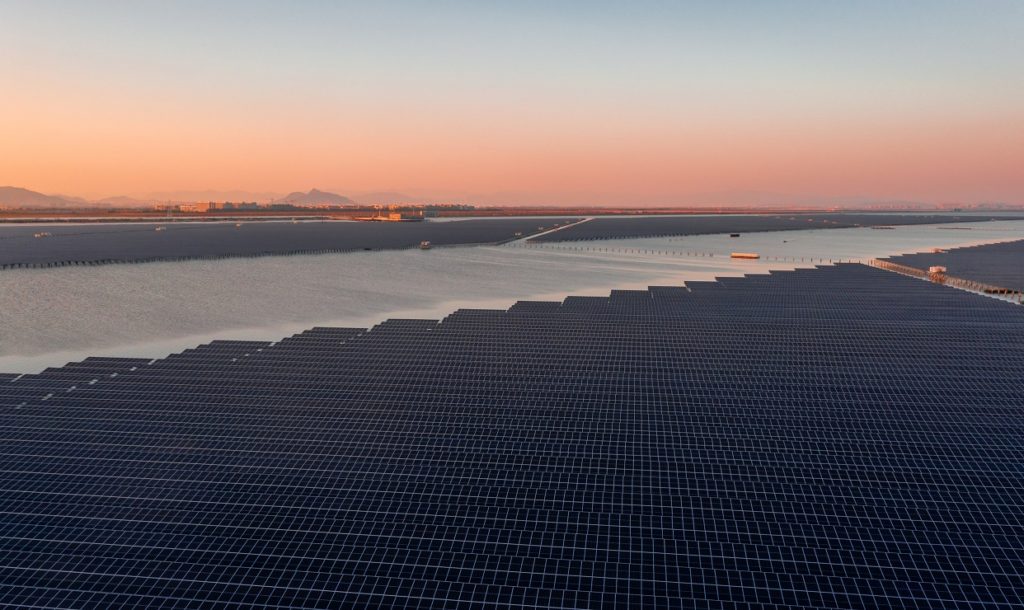
A 550MWp PV project constructed at a tidal flat area of Zhejiang province, China, has been connected to the local power grid, the company behind the plant has announced.
Astronergy/Chint Solar said the nearshore installation, which combines PV power generation with fish farming, is the biggest of its kind in Asia.
Unlock unlimited access for 12 whole months of distinctive global analysis
Photovoltaics International is now included.
- Regular insight and analysis of the industry’s biggest developments
- In-depth interviews with the industry’s leading figures
- Unlimited digital access to the PV Tech Power journal catalogue
- Unlimited digital access to the Photovoltaics International journal catalogue
- Access to more than 1,000 technical papers
- Discounts on Solar Media’s portfolio of events, in-person and virtual
Or continue reading this article for free
Called the ‘Wenzhou Taihan 550MW aquaculture-PV complementary solar plant’, the project features 1,396,000 of Chint’s ASTRO 450Wp mono-Si modules to generate around 650GWh per year.
With the plant beginning commercial operations earlier this month, the clean energy power generation capacity of the Wenzhou power grid increased by about 26%, Chint said.
As well as supplying electrical transmission and distribution equipment for the plant, Astronergy/Chint Solar will also be the operations and maintenance service provider.
The company touted the potential of building solar projects at sea to make use of available space while still allowing aquaculture.
The deployment of floating solar projects in parts of Asia with high population densities has been on the rise. In Taiwan, a project of note was completed last year by developer Chenya Energy in the island’s most densely populated area. With a capacity of 181MWp, the plant has modules fixed to a mooring frame and floats that are supported by concrete anchors, with the installation sitting on the seabed during low tide and floating when the tide rises.
Floating PV deployment has been boosted in China by a government policy that promoted the construction of plants in coal mine subsidence areas.







